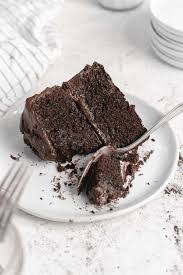Benefits of Chocolate
Few things bring as much joy as a piece of chocolate. Whether it’s dark, milk, or white, chocolate is a universal favorite that has delighted people for centuries. From comforting desserts to gourmet truffles, this sweet indulgence offers more than just flavor — it’s a blend of art, science, and emotion. Let’s explore how chocolate became the world’s most loved treat, its types, health benefits, and why it continues to be a timeless pleasure.
The Origins of Chocolate
Chocolate has a rich history that dates back over 3,000 years. It originated in ancient Mesoamerica, where the Mayans and Aztecs made a bitter drink from cacao beans known as “xocoatl.” They believed it had divine properties and even used cacao beans as currency.When Spanish explorers brought cacao to Europe in the 1500s, sugar was added — transforming the bitter drink into a sweet delicacy. Over time, with advancements in processing and technology, chocolate evolved into bars, candies, and desserts we enjoy today.
How Chocolate Is Made
The process of making chocolate begins with the cacao tree, which grows in tropical regions. The journey from bean to bar involves several key steps:
-
Harvesting: Ripe cacao pods are cut open to remove the beans.
-
Fermentation: The beans are fermented for a few days to develop flavor.
-
Drying: The fermented beans are sun-dried before shipping to factories.
-
Roasting: Beans are roasted to enhance aroma and taste.
-
Grinding: The nibs are ground into cocoa mass, which contains cocoa butter and solids.
-
Mixing & Conching: Sugar, milk, and cocoa butter are blended until smooth.
-
Tempering: The mixture is carefully cooled to achieve a glossy finish and perfect snap.
-
Molding: The final step forms bars, truffles, or other chocolate products.
This careful process ensures every bite melts smoothly and delivers that signature rich flavor.
Types of Chocolate
1. Dark Chocolate
Made with high cocoa content and little to no milk, dark chocolate has a bold, intense flavor. It’s also packed with antioxidants and is considered the healthiest form of chocolate.
2. Milk Chocolate
Creamy and sweet, milk chocolate combines cocoa solids with milk powder and sugar. It’s the most popular type worldwide and perfect for desserts and snacks.
3. White Chocolate
Though it doesn’t contain cocoa solids, white chocolate uses cocoa butter, milk, and sugar, offering a rich, buttery sweetness.
4. Ruby Chocolate
A recent addition, ruby chocolate is made from special cocoa beans that naturally produce a pink hue and fruity flavor — no color additives needed.
5. Compound Chocolate
Often used in baking, this type uses vegetable fats instead of cocoa butter, making it more stable for melting and coating purposes.Each type has its own charm, making chocolate a truly versatile ingredient for every palate.
If you want to more about chocolate then visit to chocolate bar
Health Benefits of Chocolate
When eaten in moderation, chocolate offers several health advantages:
-
Rich in Antioxidants: Dark chocolate contains flavonoids that help reduce inflammation and protect the heart.
-
Mood Booster: Chocolate triggers endorphin release and increases serotonin levels, improving mood and reducing stress.
-
Heart Health: Studies suggest that moderate dark chocolate consumption may improve blood flow and lower blood pressure.
-
Brain Function: The caffeine and theobromine in chocolate can enhance focus and alertness.
-
Skin Benefits: The antioxidants in cocoa help improve skin hydration and protect against sun damage.
Remember, the key is moderation—a small piece of high-quality dark chocolate a day is both satisfying and beneficial.
Popular Uses of Chocolate
Chocolate isn’t just for eating—it’s a creative ingredient used in countless ways:
-
Desserts: Cakes, brownies, cookies, and pastries.
-
Drinks: hot chocolate, milkshakes, and coffee blends.
-
Confectionery: Candies, truffles, and pralines.
-
Gifting: A classic choice for birthdays, anniversaries, and Valentine’s Day.
-
Beauty Products: Used in face masks, scrubs, and spa treatments due to its antioxidant properties.
Its ability to blend with other flavors like caramel, nuts, fruits, and coffee makes it a favorite in kitchens and industries alike.
Fun Facts About Chocolate
-
It takes about 400 cacao beans to make one chocolate bar.
-
The largest chocolate bar ever made weighed more than 12,000 pounds.
-
Switzerland consumes more chocolate per person than any other country.
-
Chocolate was once used as currency by ancient civilizations.
-
Cocoa trees can live up to 100 years, though they produce beans for about 25.
These fascinating facts show just how special this sweet treat truly is.
Choosing Quality Chocolate
Not all chocolate is created equal. To enjoy the best flavor and health benefits:
-
Look for chocolate with 70% or higher cocoa content.
-
Avoid products with too many artificial additives or palm oils.
-
Choose fair-trade brands that support ethical cacao farming.
-
Store chocolate in a cool, dry place away from direct sunlight.
Good chocolate melts smoothly, smells rich, and leaves a lasting taste — that’s how you know it’s real quality.
Conclusion
From its ancient origins to its modern-day popularity, chocolate remains one of the world’s most beloved indulgences. It’s more than just a sweet treat — it’s a source of comfort, creativity, and even health benefits when enjoyed wisely. Whether you prefer dark, milk, or white, every piece of chocolate tells a story of craftsmanship and tradition.So next time you unwrap a bar, savor it slowly — because every bite is a little piece of happiness.
For more articles visit here



